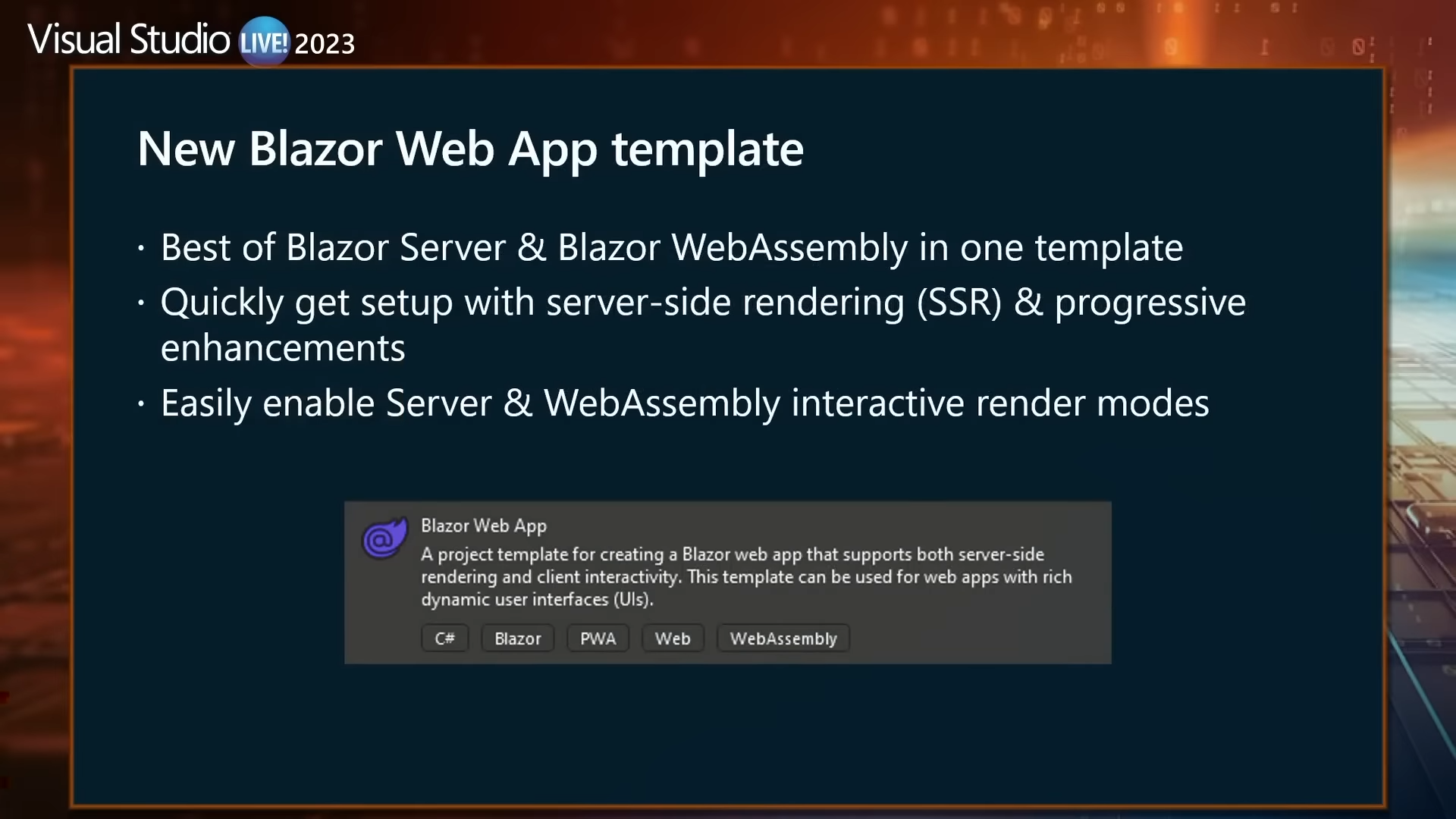- Daniel Roth is the product manager for the ASP.NET team for Blazor
- Blazor is a web UI framework based on .NET that allows building web experiences using C# without JavaScript
- Blazor has a reusable component model for UI events, render updates, and two-way data bindings
- Blazor has built-in components for handling forms and validation, displaying virtualized data sets, and supports Progressive Web Apps
- Blazor has rich tooling in Visual Studio and Visual Studio Code, and interoperability with JavaScript
- Recap of new features in Blazor for .NET 7, including support for native mobile and desktop apps and HTML custom elements
- Blazor in .NET 8 aims to combine server-side rendering and client-side rendering for the best UI experiences in modern web applications.
Blazor is a web UI framework based on .NET that allows developers to build interactive web experiences using C# without requiring JavaScript. It comes with a reusable component model for handling UI events, rendering updates, and setting up two-way data bindings. Blazor also supports building Progressive web apps, which can be installed and support offline scenarios using open web standards. With Visual Studio and Visual Studio Code, developers have access to rich tooling and support for hot reload while writing Blazor apps. Blazor can interoperate with JavaScript, making it easy to reuse existing JavaScript libraries. In .NET 8, Blazor expands its reach beyond the web and allows developers to build native mobile and desktop apps using the Blazor hybrid pattern integrated with .NET Maui. .NET 8 also aims to enable developers to use Blazor to get the best of both the client and the server when building web UI. This involves a combination of server-side rendering, which helps apps load faster, and client-side rendering, which provides low latency UI interactions and leverages client capabilities. Blazor’s component model is focused on handling UI interactions from the client, while server-side rendering is best suited for static content. By combining both approaches, developers can create modern web apps that offer the best of both worlds.
Summary:
- Blazor is a web UI framework based on .NET that allows developers to build interactive web experiences using C# without requiring JavaScript.
- Blazor supports building Progressive web apps, which can be installed and support offline scenarios using open web standards.
- In .NET 8, Blazor expands its reach beyond the web and allows developers to build native mobile and desktop apps using the Blazor hybrid pattern integrated with .NET Maui.
- Blazor’s component model is focused on handling UI interactions from the client, while server-side rendering is best suited for static content.
- By combining both approaches, developers can create modern web apps that offer the best of both worlds.
